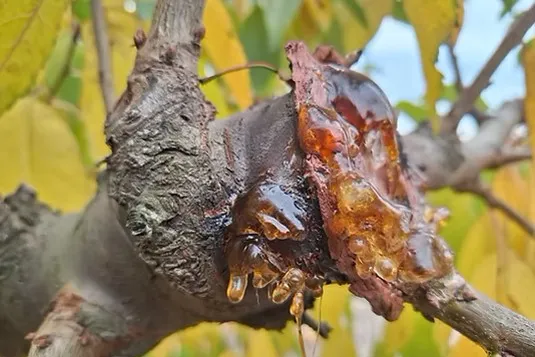Yield mapping is the process of collecting georeferenced information about fruit yield during harvest, which is important for understanding orchard variability. Based on the information, growers can identify areas of high and low yield and apply site-specific management, such as variable rates of fertilization, irrigation or other inputs. Growers can also use this information to compare yields from year to year.
Dr. Brent Black, a professor in the Department of Plants, Soils, and Climate and an Extension Fruit Specialist at Utah State University, is the principal investigator of a project funded by a grant from the United States Department of Agriculture’s Specialty Crop Research Initiative program.
The project is a combined effort of researchers from Utah State University and Michigan State University. The main objective is to apply precision agriculture strategies in tart cherry orchards to optimize irrigation, nutrition, and canopy management. One of the components of the project is to develop a yield monitoring solution for tart cherries.
In tart cherry orchards, the fruits are mechanically harvested using a shake-catch system and held in a tank with cold water. Anderson Safre, a PhD student in Irrigation Engineering at Utah State University, developed a device capable of tracking tart cherry yields by measuring the distance between tank-filling events.

The device uses an ultrasonic sensor to detect when the tank has been removed and a GPS antenna to capture the position. A microcomputer then processes and stores the information. After a series of corrections to remove noise from the collected data, the information is transformed into a map. A full tank has approximately 500 kg of fruit.
The yield per unit area is calculated by dividing the fruit weight by the distance travelled by the machine. Another feature of this system is the ability to quantify harvest labor efficiency by calculating the average time each operator takes to harvest a single tree.
For example, one operator might take 4 hours to harvest one hectare while another operator takes 2 hours. Harvest labor accounts for a significant portion of orchard expenses. This data can be used to improve the efficiency of harvest labor by monitoring individual operators.
Yield maps are valuable pieces of information for commercial farming operations. They describe the final output and the results of orchard management. Currently, yield monitoring systems in the market costs thousands of dollars, which is not accessible for many growers. This is the first yield monitor for tart cherries, and the cost of materials to build this device is less than 400 USD which will make the technology easily accessible for orchard managers regardless of scale.
Anderson Safre
Utah State University
Cherry Times - Tutti i diritti riservati












